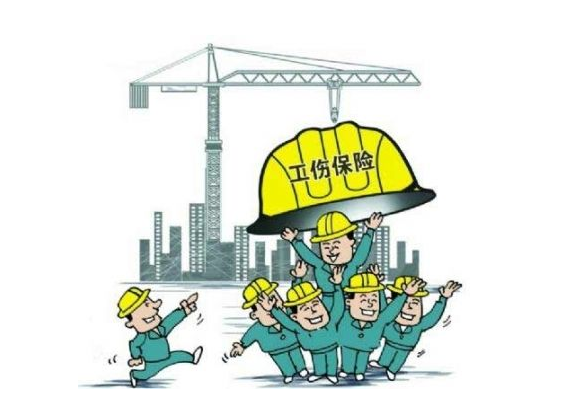摘要
随着经济的发展和城市的扩大,农村剩余劳动力逐步向城市转移,造就了庞大的农民工群体。农民工主要集中在劳动强度大、职业风险强的行业,建筑业作为我国国民经济的支柱产业,吸纳了大量的农民工,建筑业农民工的职业安全问题也受到了各方的广泛关注,我国己初步建立起相应的建筑业工伤保险制度,并采取了一系列管理和保障措施来保证建筑业农民工的权益。

本文在对南宁市现行建筑业工伤保险制度的分析过程中,发现了现行建筑业工伤保险制度在工伤预防、费率计算、保险基金管理等方面存在问题。在对问题产生的原因进行分析的基础上,通过借鉴国外的先进经验,提出了改进我国现有建筑业工伤保险制度的建议是建立工伤预防机制、实行浮动费率机制和合理利用工伤预防费。对于我国建筑业来说,安全生产事故频发是行业一大难题,想要有效地防止安全事故的发生必须要提高企业做好安全生产工作的积极性,引入建筑业工伤保险的工伤预防机制来激励企业重视安全生产。
工伤预防机制通过浮动费率和工伤预防费来激励企业提高安全生产水平。浮动费率直接影响企业的工伤保险成本,以何种指标来评价企业安全生产水平是浮动费率调整的基础,本文运用模糊层次分析法,釆用人、物、管理、环境、历史五大因素指标构建评价模型,得出企业安全生产状况的评价结果,并以此为基础确定工伤保险费率的浮动档次。运用工伤预防费在宣传、培训、奖惩等方面对企业和农民工的行为进行影响,是提高安全生产水平的另一途径,工伤预防费的提取比例是否合理、使用途径是否正确决定了其发挥作用的大小,本文在对现有工伤预防费提取比例和使用范围进行分析的基础上,提出了拓宽工伤预防费资金来源和使用范围的建议。
关键词:建筑业,农民工,工伤保险,工伤预防。
AB STRACT.
Along with acceleration of the economic development and the urbanization,thousands of millions of surplus rural labors gradually migrate into cities,creating a huge group of migrant workers. Migrant workers mainly engaged insuch industry with high intensity and risks, while the construction industry,absorbs large amount of migrant labors involved, is a pillar industry of ournational industry, whose migrant workers occupation safety issues also bewidely concerned. China has initially established the corresponding work injuryinsurance system to the construction industry, as well has adopted a series ofmanagement and guarantee measures to ensure the rights and interests ofmigrant workers.
In the process of analyzing the current construction industry injuryinsurance system in Nanning,the paper finds out the existing problems of thecurrent construction industry injury insurance system in the aspects of industrialinjury prevention,rate calculation,insurance fund management and so on .Onthe base of analyzing the causes of the problem, the foreign advancedexperience, put forward the improvement of the system of industrial injuryinsurance existing in China's construction industry proposals is a mechanism ofinjury prevention, floating rate mechanism and rational utilization of industrialinjury prevention fee. For the construction industry of our country,the frequentoccurrence of safe production accidents is a big problem in the industry,and itis necessary to improve the enthusiasm of enterprises to do well in safetyproduction and introduce the work injury prevention mechanism of constructionindustry injury insurance to encourage enterprises to attach great importance tosafety production .Floating rates directly affect the cost of industrial injuryinsurance in enterprises. What indicators are used to evaluate the level ofproduction safety is the basis of the adjustment of floating rates. In this paper,the fuzzy analytic hierarchy process (FAHP) is used to use people, objects,management, environment. This paper constructs an evaluation model of fivehistorical factors, obtains the evaluation results of the enterprise's safety inproduction, and determines the floating grade of the industrial injury insurancerate based on the evaluation results.
Mechanism of injury prevention and injury prevention by floating rate feesto encourage enterprises to improve the level of production safety. It is anotherway to improve the level of safety production by using industrial injuryprevention fees to influence the behavior of enterprises and migrant workers inpropaganda,training,rewards and punishments,etc.Whether the proportionof work-related injury prevention fees is reasonable or not, and whether the waysize of its role. On the basis of the analysis of theCC;eof use determinesproportion and thepaper puts forwardrange of the existing work injury prevention fees,thissuggestion of widening the source of funds and the scopeof use of the prevention fee for work injury.
KEY WORDS:Construction industryworkers; Injury Insurance:InjuryPrevention
目录
第一章绪论。
1. 1研究的背景
1. 2研究的意义和目的。
1. 3国内外研究现状
1.3.1国外研究现状
1.3.2国内研究现状
1. 4论文拟解决的主要问题
1. 5研究方法与技术路线
第二章农民工及工伤保险的相关概念及理论
2. 1相关概念
2.1.1对农民工的界定
2.1.2工伤的定义
2.1.3工伤保险的界定
2.1.4工伤预防的定义
2. 2工伤预防的相关理论
2. 2. 1安全金字塔理论
2. 2. 2安全效益规律
2. 3模糊层次分析法
第三章建筑业农民工工伤保险制度现状分析
3. 1南宁市建筑业工伤保险制度介绍
3. 2建筑业工伤保险制度现状一,
3. 2. 1建筑业农民工工伤事故情况及发生原因
3. 2. 2工伤保险制度运行情况
3. 3建筑业工伤保险制度存在问题及原因分析
3. 3. 1南宁市建筑业工伤保险制度存在的问题
3. 3. 2建筑业工伤保险问题的原因分析
第四章建筑业工伤保险制度设计研究
4. 1国外的工伤保险制度
4.1.1德国模式
4. 1. 2美国模式
4. 1. 3日本模式。
4. 2国外模式对我国建筑业工伤保险制度设计的启示
4. 3建筑业农民工工伤保险制度的改进建议。
4. 3. 1建立工伤预防机制。
4. 3. 2实行工伤保险浮动费率机制
4. 3. 3合理利用工伤预防费
第五章建筑业工伤保险制度改进的实证分析
5. 1 X项目基本概况
5. 2项目安全状况评价模型的构建。
5. 3基于评价模型的工伤保险制度应用及效果分析。
5. 3. 1评价结果在工伤保险制度中的应用
5. 3. 2应用效果分析。
第六章结论与展望
6. 1结论。
6. 2展望
参考文献
致谢。
攻读学位期间发表的学术论文
摘要建筑业是国民经济的支柱型产业。在传统建筑的全寿命周期内,对资源、能源消耗巨大,环境破坏严重,同时,产生的建筑垃圾也给地球带来了巨大负担。因此,建筑的可持续发展被提上各国的议程。目前绿色建筑在我国发展正处于由绿色建筑单体向绿色建筑群发...
本文的技术路线是,首先在查阅相关研究文献和初步了解建筑业工伤保险制度发展相关背景的基础上,运用比较分析方法把国外及我国的工伤保险制度进行对比,寻找出我国工伤保险制度在工伤治理方面与国外先进经验存在的差距,并通过借鉴国外先进经验得出完善我国建...
安全效益是指安全水平的实现,能够给国家、集体、个人带来的经济或非经济的效益。安全效益的规律是指用尽量少的安全投资,获得尽可能多的符合全社会需要和人民要求的安全保障。...
在农民工比较集中的几个行业中,建筑业农民工工伤保险参保率仅为14.9%,而农民工工伤保险参保率最高的制造业为34.2%,是建筑业的2.3倍。如表3-2所示〔xol,建筑业与其他行业在农民工社会保险参保率方面仍存在明显差距,建筑业农民工工伤保险的发展仍然没有达...
由于我国国情特殊,我国建筑业企业自身的管理机制比较松散,对工伤预防的管理不够重视,对很多违反安全生产规程的行为不采取管理手段加以制止。反观国外建筑企业,在施工全过程中都有严格的管理规定,对员工违反安全生产规范的行为更是采取了严厉的处罚措施,...
在工伤赔偿方面,由工伤保险基金统一支付工伤赔偿费肇雇主不再另外支付赔偿金,但是对于因企业重大过失而导致的工伤事故,则由雇主承担全部工伤赔偿责任,未按时缴纳保险费或不参加工伤保险的企业,也不能在工伤赔偿上免责。...
工伤保险对企业利润的影响还体现在工伤保险费用的减少和为安全投入高的企业提供的工伤保险优惠措施上,通过保险政策与企业工伤预防费用挂勾,给予企业一定的优惠,从而在成本和利润上造成影响,产生经济效益。...
要克服这一缺点就需要保险管理机构建立一个数据库,运用自动化的手段解决数据存储和运算问题。...
针对工伤预防费的使用问题,提出根据项目安全状况的评价结果,对企业实行奖励金返还,并将奖励金用于工伤预防,进一步提高企业工伤预防水平,提高工伤预防费的使用效率。...